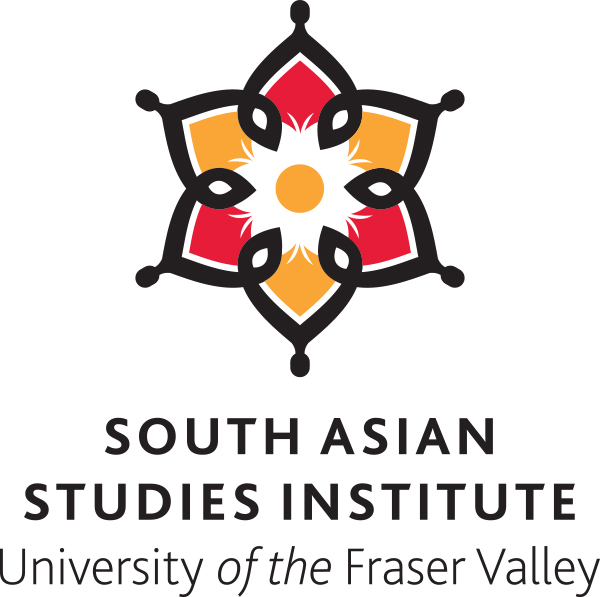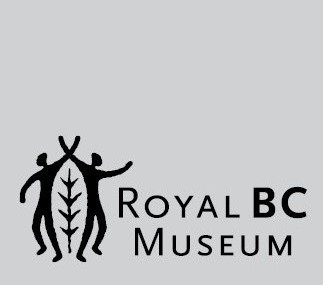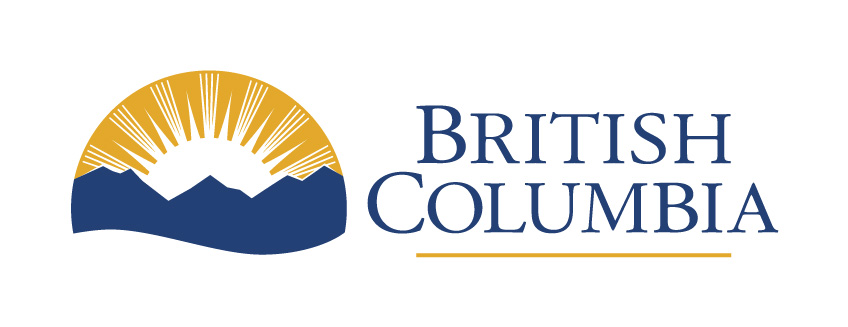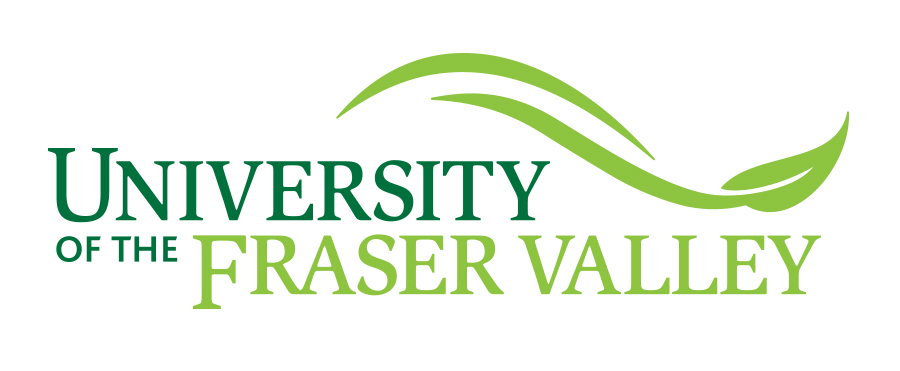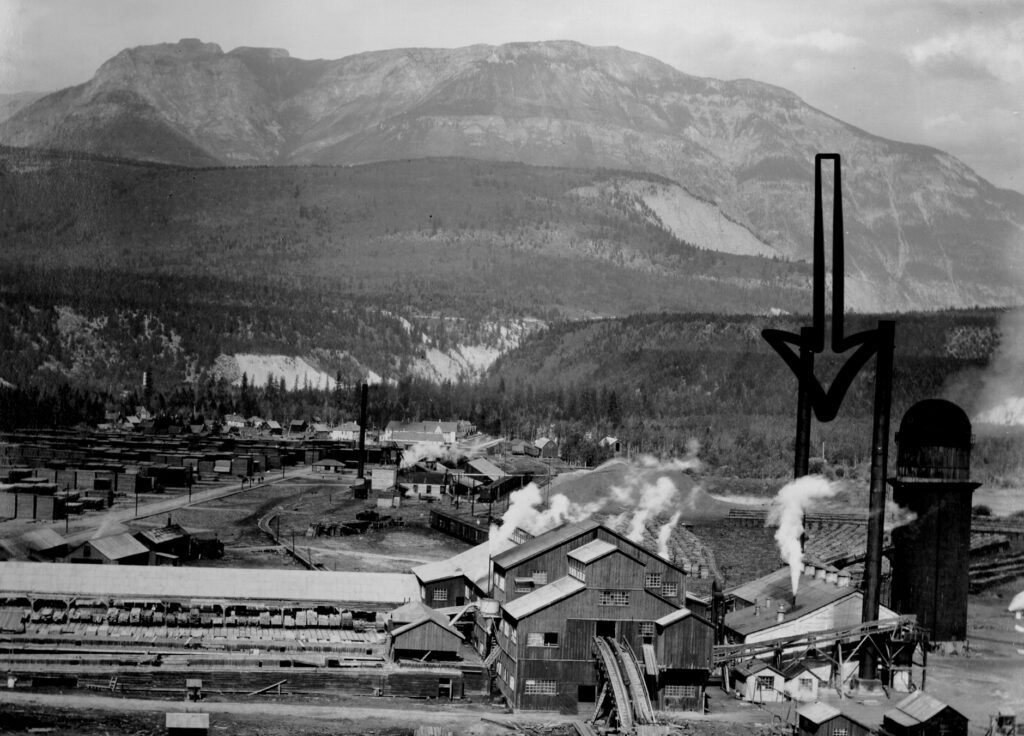
First Sikh Temple in North America
The great famine of 1899-1900 was responsible for the deaths of millions of people in India. Initially brought on by a heavy drought and crop failures, living conditions were exasperated by disease, particularly cholera. Once the cholera epidemic had run its course, an unprecedented bout of malaria hit and a nation that was already weakened was devastated. This drought was one of many over a small window of time that would hit the population of India, keeping the people impoverished, malnourished and without hope.
In 1897, Queen Victoria invited her South Asian troops to attend her Diamond Jubilee celebrations in London. These Sikh soldiers, having crossed Canada on their way home, returned to India with stories of an attractive land waiting to be settled by British subjects.
In 1902, part of a Hong Kong military regiment passed through Canada on their way to England to take part in the celebrations of the coronation of King Edward VII. By 1903 the first 30 South Asian men had arrived in British Columbia. Their arrival caused quite a stir and while they were fellow British subjects they were looked upon with fear and derision.
Upon their arrival, they were met with angry mobs who didn’t want them to get off the boats. People who were worried that the immigrants who had been coming regularly to British Columbia would soon out number them. Pressed by the crowd the government was forced into making a decision about whether they would stay or go. While the decision was being made, the men from India were starving.
Most were travelling with very little money; they certainly did not have the means to return to their homeland nor did they have the will to do so. Work was soon found for them at sawmills, in mining companies and with the Canadian Pacific Railway. The men were eager to work and lived on very little, sending money to their families in India was a priority to them.
They endured unimaginable conditions in order to stay and were turned away from community after community. Trouble persisted and even though landlords rented buildings to the South Asian community, they could unceremoniously be thrown into the street if the neighbours happened to object. If they did find old buildings to move in to, repairs were not possible because no one would sell them lumber or supplies.
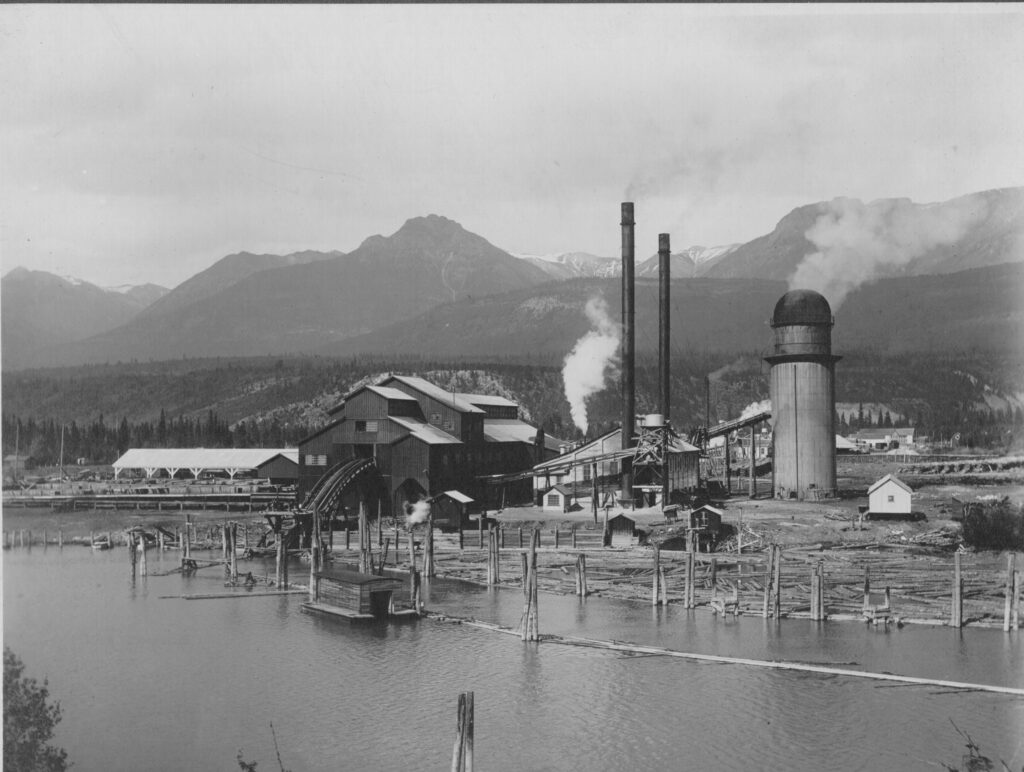
When the South Asian men arrived in Golden the community was in its infancy. The Columbia River Lumber Company recognized the value of these tall strong men and were willing to give them a chance. They hired them to work in the lumberyard, planer, and sawmill.

The first documented proof showing South Asians being residents of Golden is a copy of a telegram sent to G.T. Bradshaw, Chief of Police, New Westminster from Colin Cameron, Chief of Police, Golden, BC on July 20, 1902. It was sent collect and reads: Geha Singh of Golden sent a telegram to Santa Singh care of Small and Bucklin for one thousand dollars.
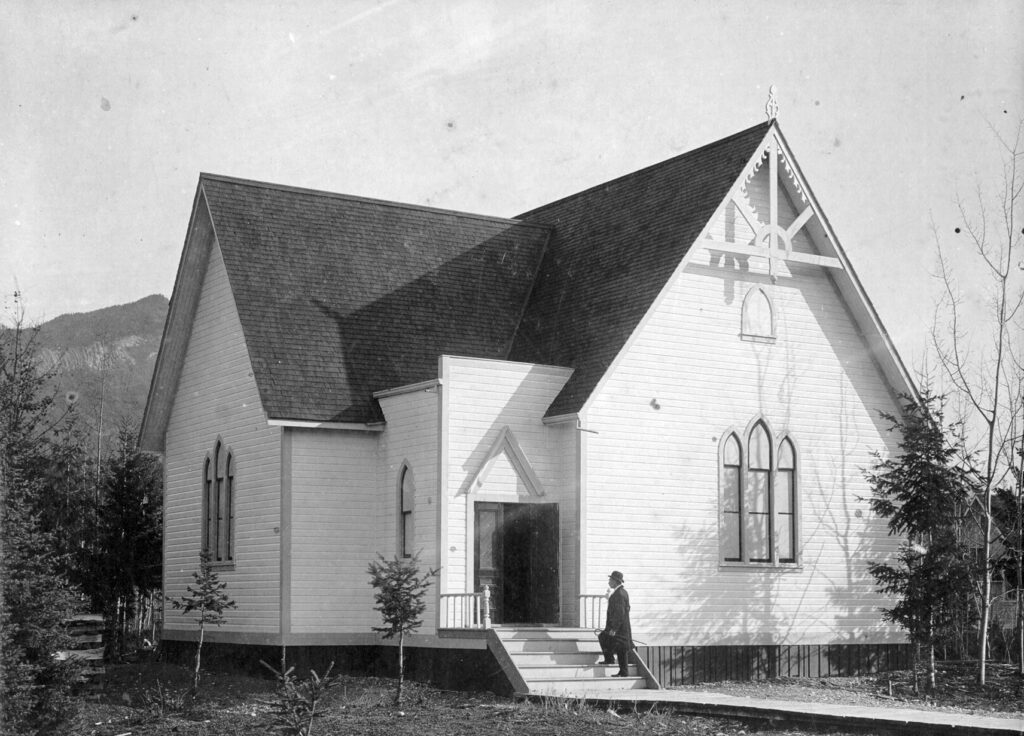
With so many men arriving in Golden from India, it became apparent that there was no-one in Golden who could work with the needs of the new arrivals and so the Right Rev William Lewis Macrae was asked to come to Golden. The Rev Macrae, previous to his arrival in Golden, spent 18.5 years in Trinidad where he had been posted as a missionary to the South Asian people there. The Reverend ministered in Golden from 1905 to 1914. His experience singled him out as the logical man to inaugurate the work of the church. Macrae always kept a front-row pew available to the South Asian community and welcomed them to continue until their temple building was ready.

Photo Credit: Golden Museum
It is commonly believed in the community that the first Sikh Temple in Canada was in Golden, BC. According to firsthand accounts it was established in an old, unused structure provided by the Columbia River Lumber Company.

This building was a plain wooden structure 12 by 20 feet in size with a gable end roof. From the outside, other than the flag pole, there was nothing to indicate it was a Temple. The building was always open. Inside was adorned with all kinds of ornaments and a beautiful blue rug with designs all over it covered the floor. An altar sat at the far end of the room. A boarding house for the Sikh men sat right beside the Temple and other housing was available near the mill.
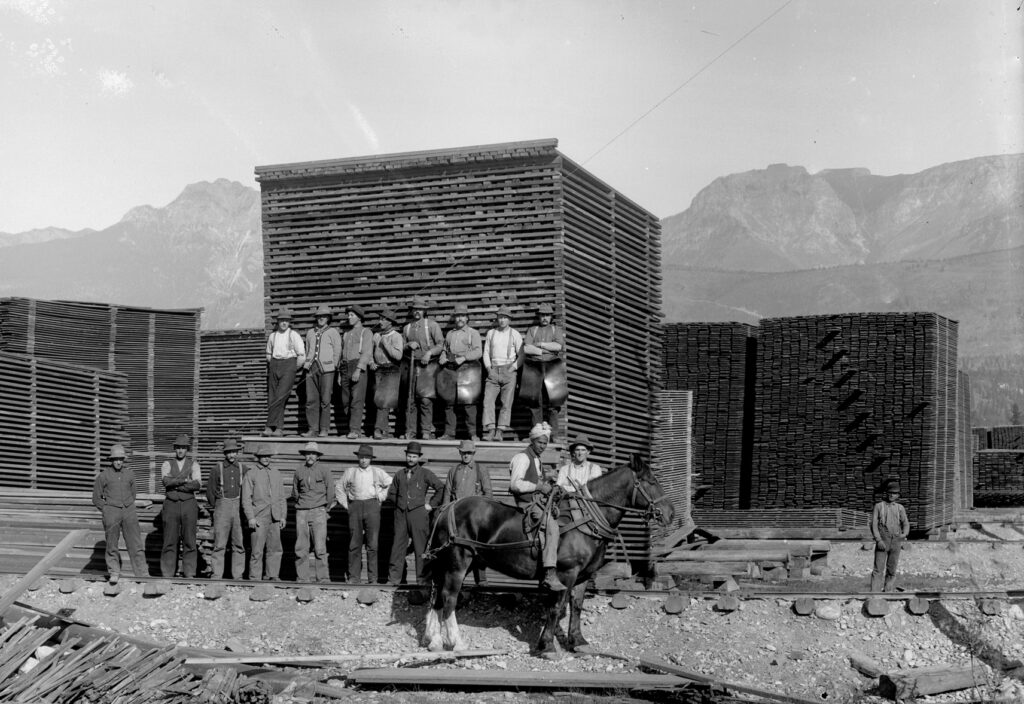
Next to the Temple was the boarding house for the South Asian men and beside that was the barn where the horses were kept. The stables had a hay loft above and children from the community would play in the hay loft, sliding down the hay chutes and when they were tired they would go next door to the boarding house where they were offered roti.
The large numbers of men that came to work for the Columbia River Lumber Company worked primarily in the sawmill and piling lumber in the yard. There is no evidence that any of the men worked in the lumber camps. According to the census of 1911, 65 South Asian men worked at the Columbia River Lumber Company Sawmill and another 31 worked for the Canadian Pacific Railway between Golden, BC and Revelstoke, BC.
By 1908, there were approximately 5,000 South Asian men in the province and once again the call for the government to get rid of them was loud. The question they faced was whether or not the Immigration Act applied to the South Asian men as they were British subjects.

The arrival of the Komagata Maru on September 26, 1914 in Burrard Inlet, carrying 365 South Asian men aboard pushed the government to make a decision. They upheld a previous decision which stated that in order to immigrate to Canada the men must meet the following criteria: 1). Have in their possession $200.00. 2). That they must have come to Canada from their homeland with no other stops along the way. 3). That they be skilled laborers. When the men on board the Komagata Maru couldn’t meet the requirement they were sent back. Those who were already living and working were allowed to stay and those coming back to Canada on the various ships had to prove previous residency in order to stay.
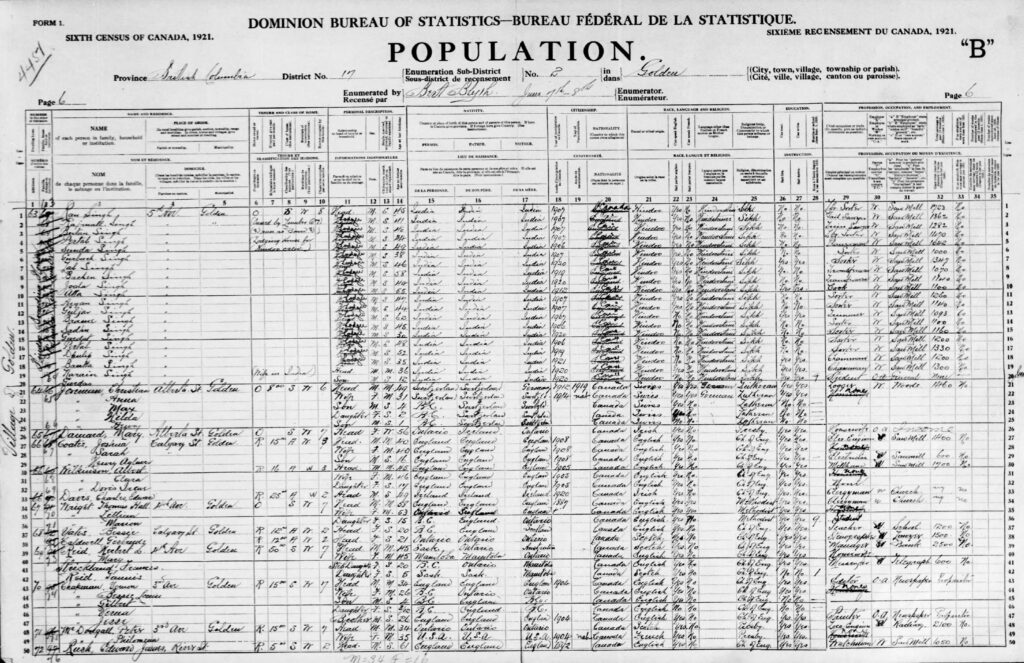
With a stringent immigration process in both India and Canada it was a very long time before families were brought to Canada. The 1911 and 1921 census of Canada shows no South Asian women in the community of Golden, BC or its surrounding area. Golden Hospital Records show that the first South Asian baby was born in Golden, BC August 25, 1925 to Mr. and Mrs. Hardit Singh. It has been recorded in first hand statements that 3 women came to Golden between 1923 and 1925.
The 1921 Census does show that there was a child aged 12, listed as a student residing with his father in Golden and they had immigrated the previous year. The students name was Gurdas and he was the son of Narrain Singh. He would have been one of only a handful of dependents allowed in the province at that time.
The South Asian community had settled in and it appears that they intended to stay for the long term. They attended communities events like the visit to Golden by the Prince of Wales who came to pin war medals on veterans. They also appeared in photos when Golden experienced a great flood in 1916. Below is the copy of a will, one of three that had been prepared in Golden for South Asian men.
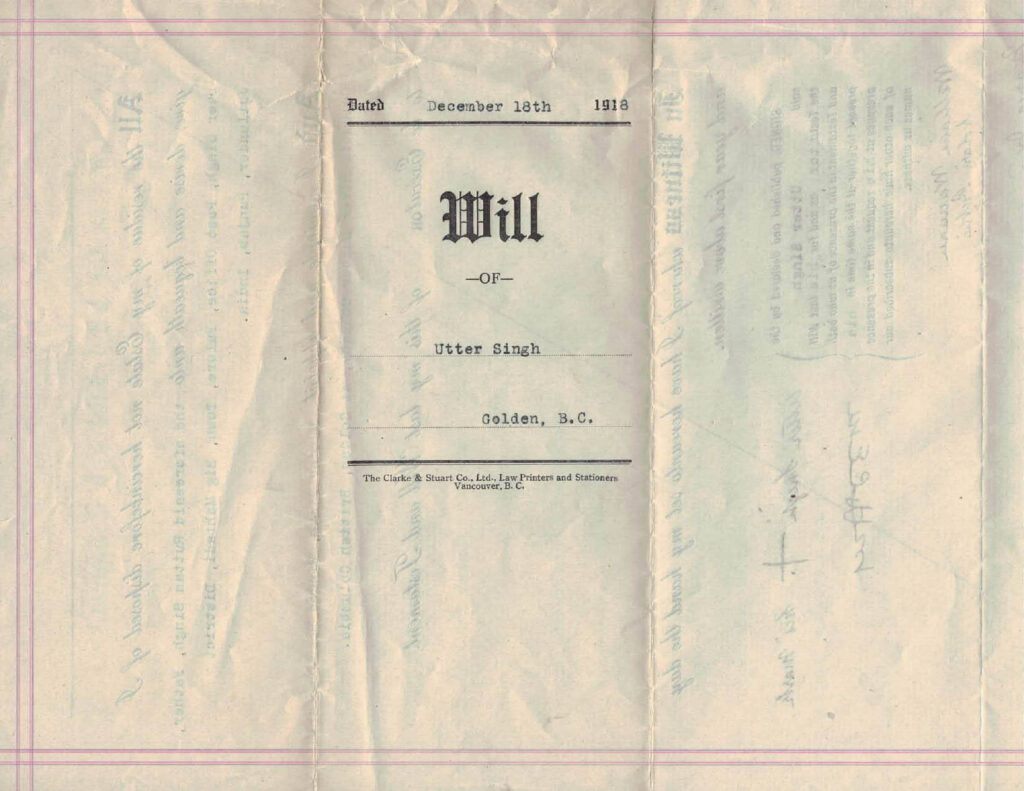
Tragedy befell the community of Golden, BC in 1926 when a forest fire razed the forests in the Golden area, burning up the timber limits of the Columbia River Lumber Company. It caused the milling giant to close and meant wholesale layoffs for the workers including those immigrants from India. With no other work in the area all of the men from India left Golden for the coast, with the hope of finding work in one of the sawmills there.
The sawmill company continued to operate the planer in 1927 but after that they closed everything down and sold the machinery to other companies. Some of the buildings just crumbled away but many of the buildings were torn apart and the lumber used in various projects around Golden. The only recorded evidence of the fate of the first Gurdwara is a written first-hand account where the gentleman recalls the building being torn down and the lumber being reused.
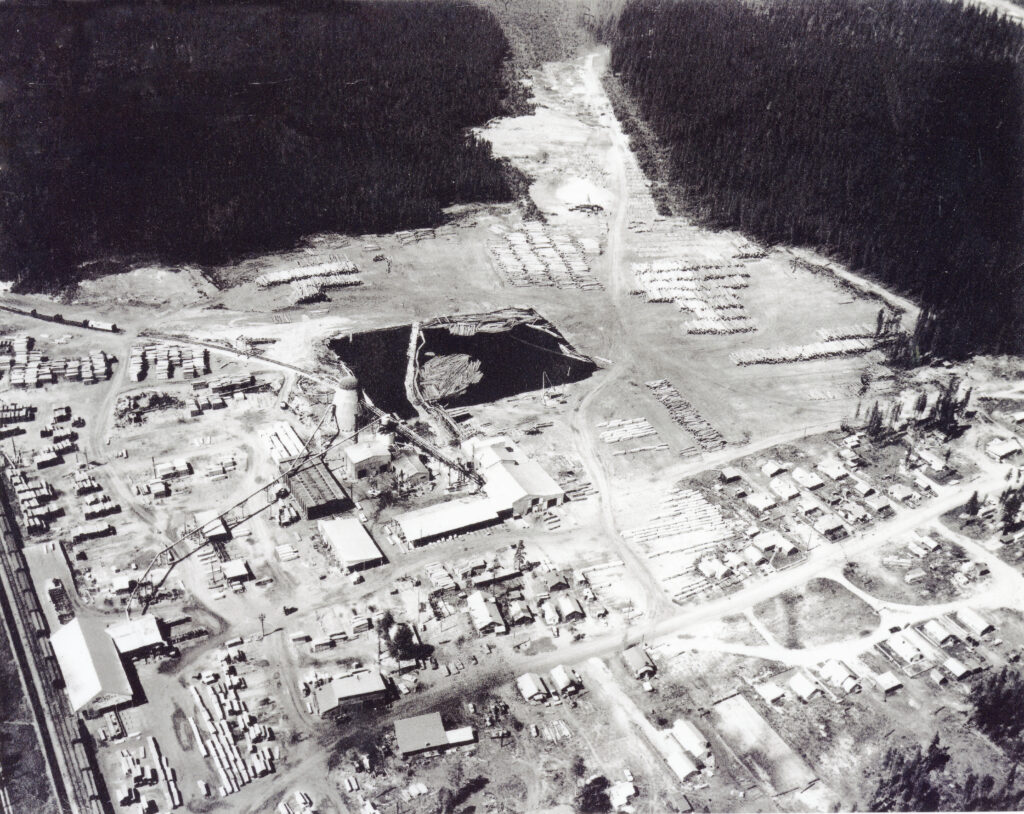
It was 30 years before the forest had regenerated to a point where they could start cutting again and once more capable, hard-working men were needed to do the work. In 1957, Gurdial (Big Bill) Singh Dhami received a call that there was work at Donald, BC where he was given a contract to load train cars and soon was made foreman. Gurdial was responsible for bringing the first wave of a new generation of South Asians to work at the sawmill in Donald, BC.
Within two years, the operation went bankrupt. Even though Big Bill was not the owner, he felt responsible for the men that he brought to Golden. He went to the coast and arranged a loan so that he could pay the 16 or 17 men that came to Golden on his word. It took him until 1963 to pay off the debt.
Dick Gondek called Big Bill and asked him to come back to Golden and promised him that this time he wouldn’t lose his shirt. He came and started recruiting and over the years brought 40 – 50 South Asian men to work here.
Even though much time had passed since the arrival of the first South Asians to the Golden area, they were still faced with hostility and resentment. Despite that, they, once again, showed that they were dependable hard-working people.
Living conditions at the company housing in Donald were poor. Way too many men were housed in cramped quarters, but they were happy to be there. After working for awhile, they were finally able to bring their families to Canada.
Some of the men took jobs in the plywood plant in Golden and moved their families into town. However, until 1996, the Donald sawmill employed more South Asian men than the Golden mill.
The first South Asian person who appears in school records in the area was Sohan Gosal, as seen in the 1964 Golden Secondary School yearbook. He was in the Occupational Class, which would be the equivalent of the Alternate School today. We can only assume that he was in the Occupational class because of a language barrier and racial bias. Sohan was also a member of the Cross Country Ski Team. He was the only student for a number of years, before the mill expanded and more families came.
By the early 1970’s quite a number of South Asian families lived in the area. They were finding it increasingly distressing that they didn’t have a central gathering place to hold funerals, weddings and other celebratory events. Events that would normally be held at a gurdwara (temple) were taking place in other community buildings, often at high cost to individuals.
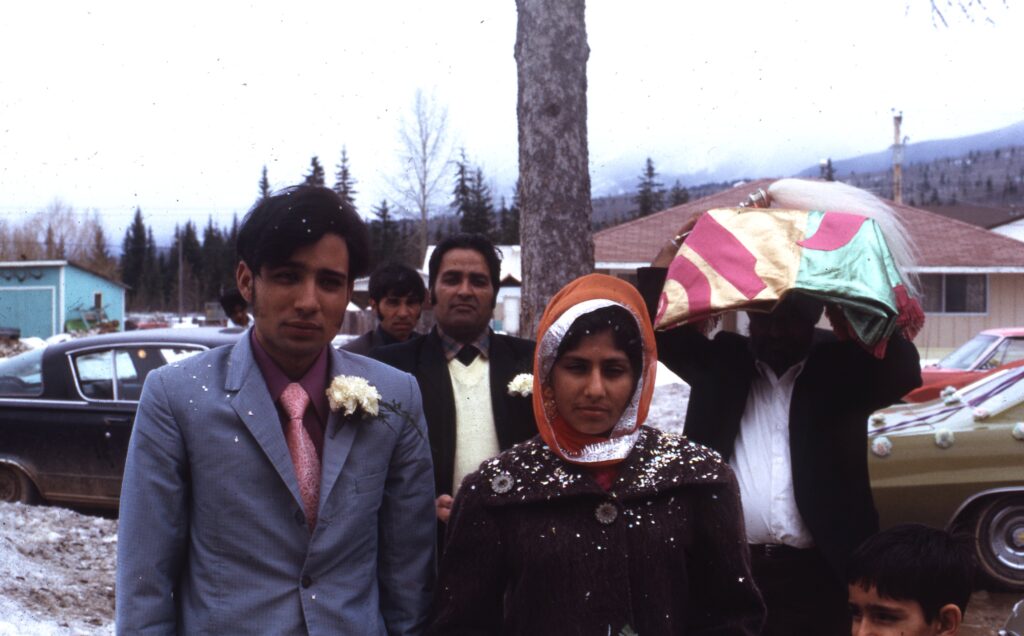
Swarn and Balbir Patara were the first Sikh couple to be married in Golden, BC. They were married April 8, 1972 in front of 60 to 70 guests in the old Golden Snow Kings Castle (aka Rod & Gun Club building). Their reception was held in the Big Bend Restaurant and cost the couple $350.00.
In order for them to be married in Golden, Swarn travelled to Lake Cowichan to bring the Granthi – a ceremonial reader of the Guru Granth Sahib – and the Holy Book (Guru Granth Sahib) here. Swarn, who got his driving licence in 1969 was driving his 1968 Impala at the time and once the wedding was over they had to drive the Granthi and the Holy Book back.
This event and the lack of a common meeting place for funerals spurred the people on to discussions about building a temple here that would also serve surrounding communities like Revelstoke, Salmon Arm to the west and Radium, Fernie to the south.

A meeting was arranged by Raminder Singh Hundle and Gurdial Singh Dhami at Raminder (Ray)’s home to discuss building a Temple in Golden. This first meeting planted the seed and several people volunteered to organize and fundraise. This first group was Raminder Singh Hundle, Shiv Singh Jaswal, and Balhar Singh Khrod. For the second meeting, they asked that all South Asian people in the area attend and look at the plan.
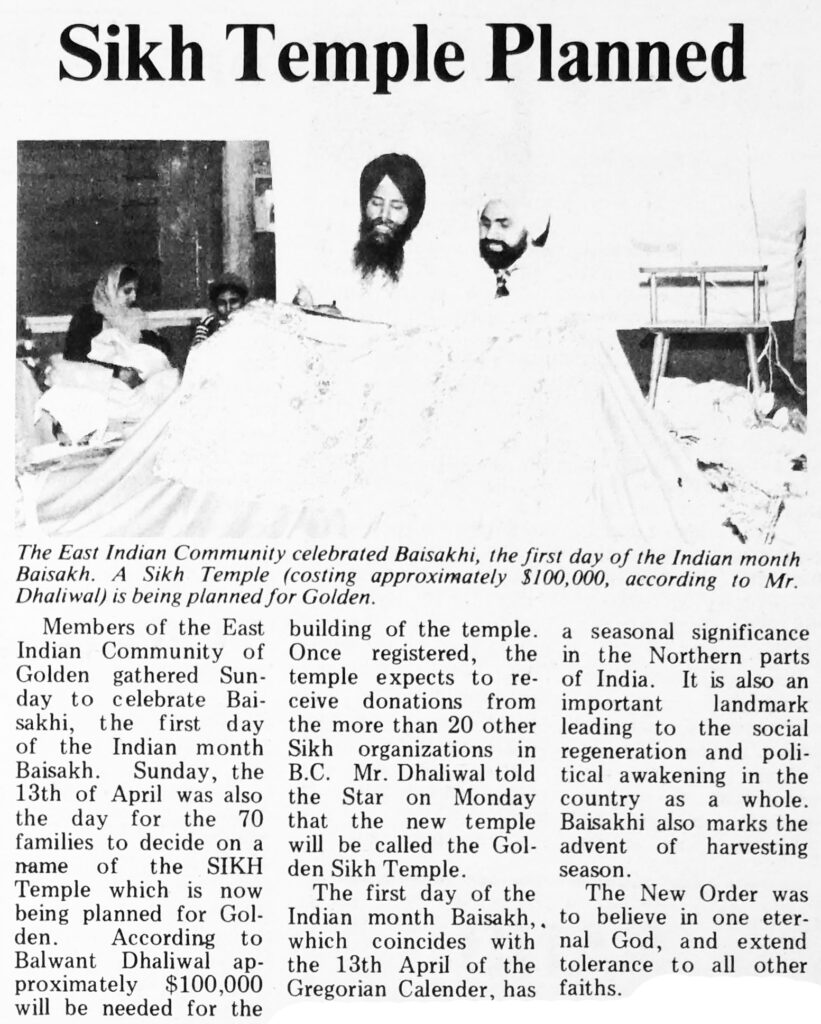
The second meeting was held in the Snow Kings Castle, a community hall located on the south side of Golden. People were so excited by this plan that they immediately started a collection toward the building and determined that they needed to be registered as a Society. This new Society would be called the Golden Sikh Cultural Society.
The Golden Sikh Cultural Society’s first board of directors were:
Mr. Piara Singh Gosal – President
Mr. Surinder Singh Parhar – Secretary
Mr. Gurdip Singh Atwal – Treasurer
Mr. Atma Singh Sandher – Assistant Secretary
Mr. Ajit Singh Gharley – Trustee
Mr. Parmjit Singh Sandher – Trustee
Mr. Balhar Singh Kharod – Trustee
Mr. Surain Singh Manhas – Chairman Building Committee
Mr. Raminder Singh Hundle – Chairman of Advisory Committee
With plans in hand the fundraising efforts were put to work and the committees estimated that it would take one year to raise the $100,000.00 needed to build the temple. Plans were drawn up for a structure 50’ X 80” with classrooms, a library, a kitchen and dining space and the sanctuary upstairs.
A great many other people were involved in this process, and we will endeavour to add names to this list as they are brought to us. Currently, we know of the following people:
Gurdial Singh Dhami
Balwant Singh Dhaliwal
Pahkar Singh Khun Khun
Ajit Singh Khun Khun
Haribhajan Singh Jaswal
Shiv Singh Jaswal
Gurdial Singh Rai Sr
Gurdial Singh Rai Jr
S.M. Ram
Surinder Singh Gill
Piara Singh Mayer
Atma Singh Bahia
Gurmit Singh Manhas
Balbir Singh Banwait
Manjit Singh Jaswal
Kuljit Singh Bains
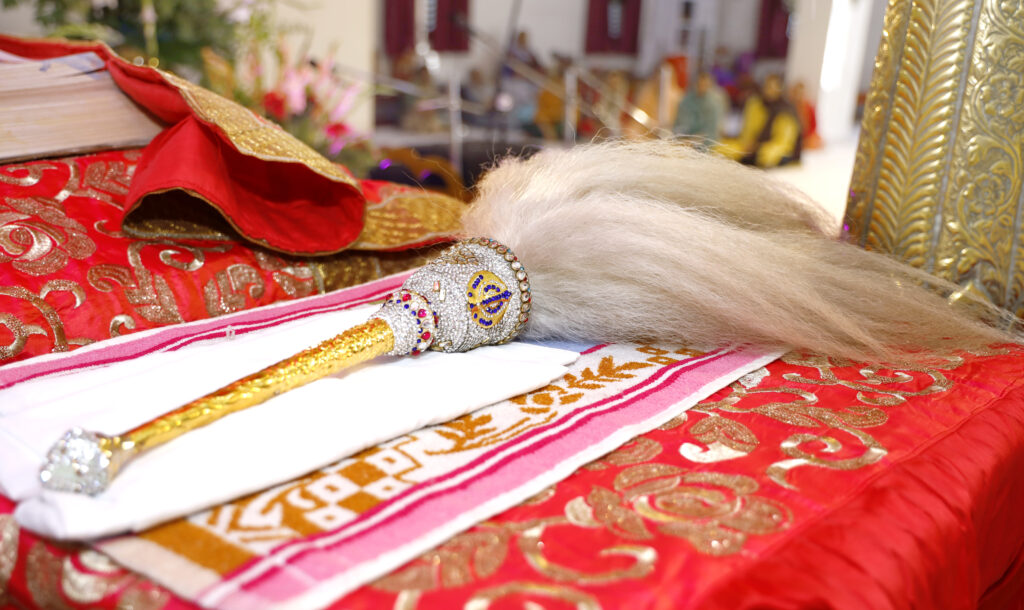
It was at this point they decided to bring a Guru Granth Sahib to Golden and Ray Hundle called his wife Parkash Hundle in Vancouver and together with 5 other volunteers they drove to Vancouver to bring the Holy Book home. In the Sikh religion only one Holy Book is required and now they had the book but no Temple to put it in. The Khun Khun family volunteered to be the caretakers of the book until such a time as the Temple was ready to receive it and Surinder Khun Khun gave readings from the Holy Book when services were held in the Snow Kings Castle.
The first Baisakhi celebrated in Golden was from April 11 to April 13, 1980 in the Snow Kings Castle. Baisakhi is the anniversary of the date that Sikhism was first brought together as a collective faith.

Now that the first items were out of the way they had to find land on which to build the temple and they approached the government and Town of Golden Council asking to be given back the land that the first Temple sat on. That was not possible, so they found a new location as close as possible to the original. Surain Singh Manhas quickly made a deal with Hari Singh Olleck of Kamloops to buy the property on 13th Street South which included 5 lots for the sum of $39,800.00.
Once the land was purchased they had to go through the process of having the land rezoned from single family dwellings to church (public use) property. Early in September 1980 the Department of Highways gave their approval and council gave their final approval so the project could finally go ahead. The first shovelful of sod was turned on September 21, 1980. Part of the preparation for building the temple was a week-long Guru Granth Sahib reading.

The first shovelful of sod was turned on September 21, 1980. Part of the preparation for building the temple was a week long bible reading.
Other Temples donated to the building fund and in the end most of the material to build the Temple was donated by a mill in the lower mainland. Their employees donated personal time each weekend to the building fund for the Golden Temple and before long the building was taking shape. This fundraising method was also used by the mill at Donald and many non Sikh’s worked through the weekend and donated their wages to the building fund.
By 1980 it was determined that approximately $230,000 would be needed to complete the building. Other Temples donated to the building fund and in the end most of the material to build the Temple was donated by a mill in the lower mainland. In addition, their employees donated personal time each weekend to the building fund for the Golden Sikh Temple and before long the building was taking shape.
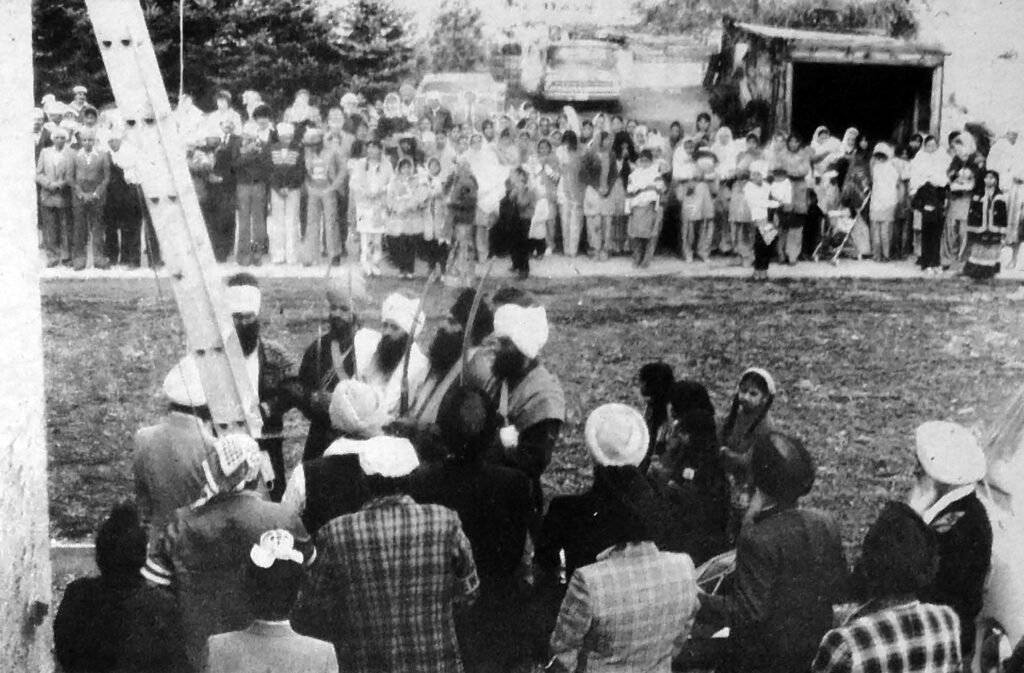
This fundraising method was also used by the mill at Donald and many non-Sikh employees worked through the weekend and donated their wages to the building fund. To help keep costs down the local sawmill was approached and arrangements were made for about 65 of their Sikh employees in the Donald division to pay overtime portions of two Saturday shifts – about $5,000 – in lumber for the new building.
A crowd of more than 200 watched the final event in the three-day official opening ceremony for the Sikh Temple in Golden. The men in the foreground with swords were part of the final event which was the unfurling of the The Nishan Sahib – the Sikh flag that adorns all Sikh Temples. The new Sikh Temple had its grand opening Oct 9, 1981.
During the 1980’s the number of South Asian families in Golden grew and most if not all of the people were Sikh. The Temple was very active and members became active in community events. They donated to community organizations and sponsored things like basketball tournaments.
Most of the families who came to Golden stayed and many lived here for 40 years. The children attended local public schools but many left Golden to pursue higher education and took jobs that would keep them away from the community. As the men started to retire they wanted to join the children in other places and choose to leave, making the community smaller.
As each year passes the number of families is dwindling and attendance at the Gurdwara is low but the small group that is still here continue to be active in the community.
In 2017, the local Sikh Community took part in the Punjabi Canadian Legacy Project. The people of Golden who took part had their stories recorded and they can be found here: Punjabi Canadian Legacy.
The Punjabi Canadian Project helped to bring the history of the Temple in Golden to the public eye and put a spot light on the dwindling numbers of adherents. The Temple had fallen into disrepair and when the wider community found out they came forward in a group to make the repairs. Much of the Temple was not only restored to its former glory but was built to a higher standard that was there originally.
In 2018 the Sikh community in Golden hosted their first Nagar Kirtan, part of a festival of Vaisakhi. The procession was led through the streets of Golden with about 3,500 people, mostly South Asian, attending for all over Canada. The procession was led by men in traditional saffron colored clothing and followed by a float carrying the Guru Granth Sahib which is the Holy Book of Sikhism. Follow this link to learn about the event as it was covered by “The Golden Star.”
Photo credit for the photos below belong to the Golden Sikh Heritage Society.
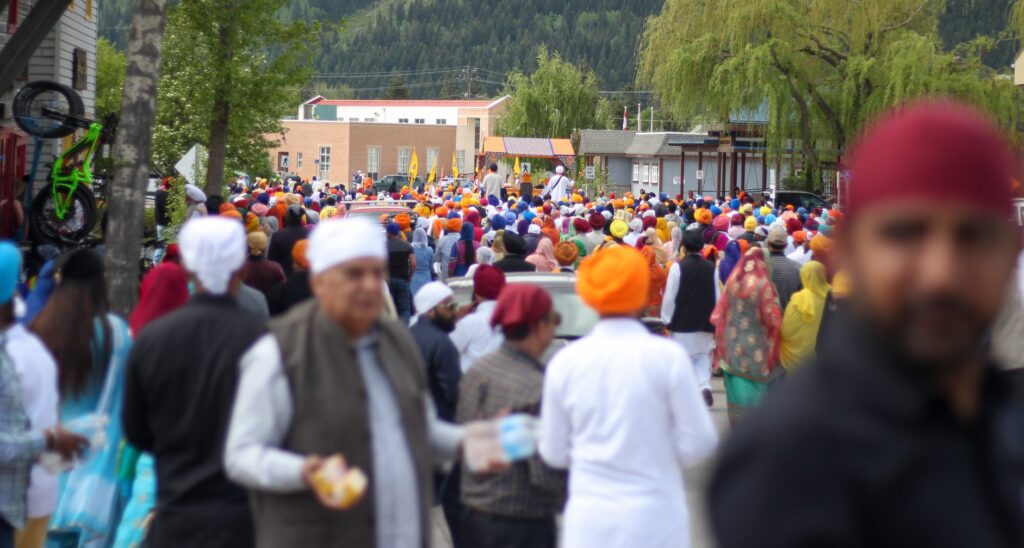
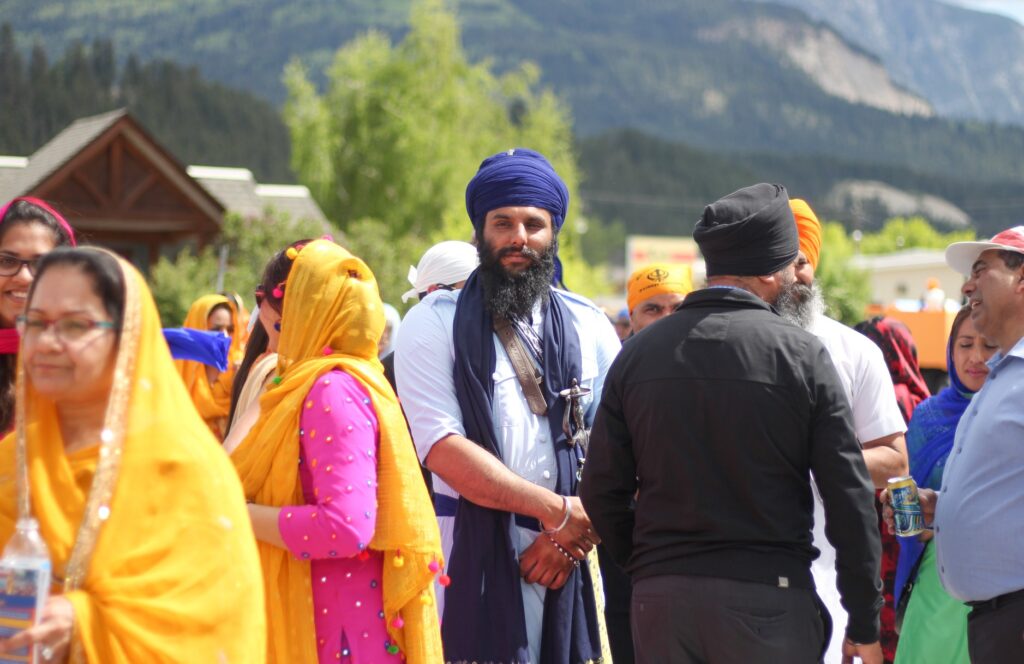
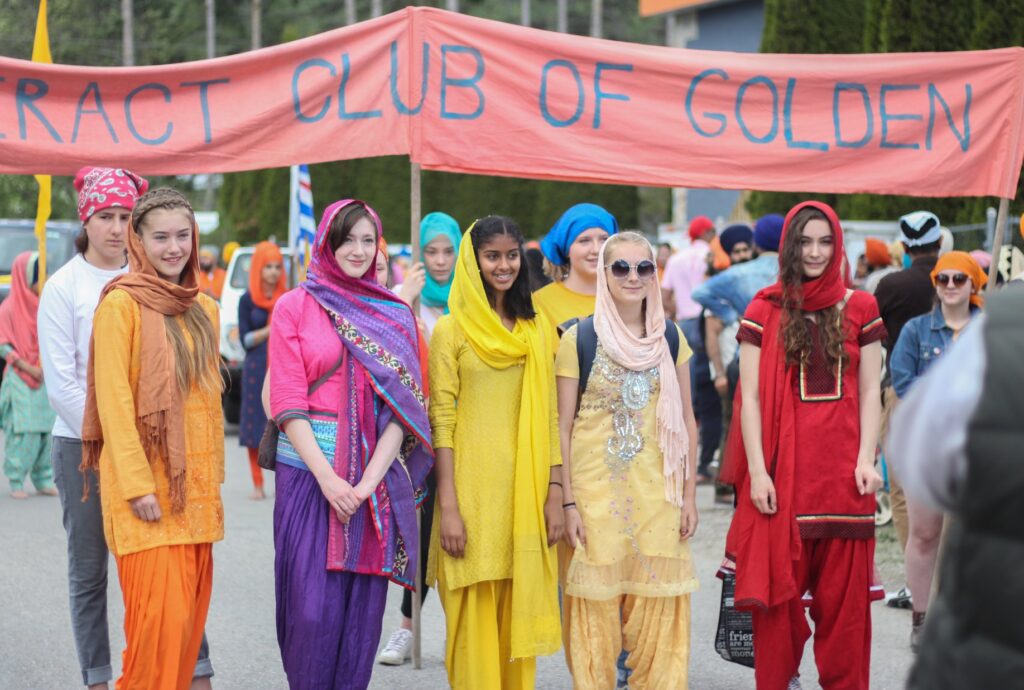
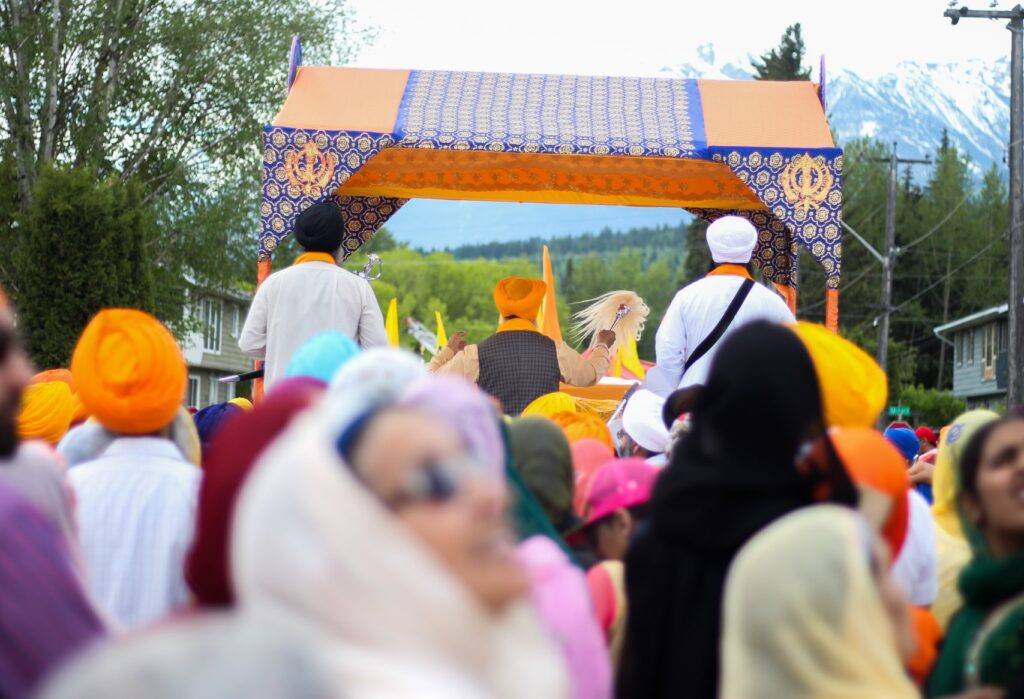
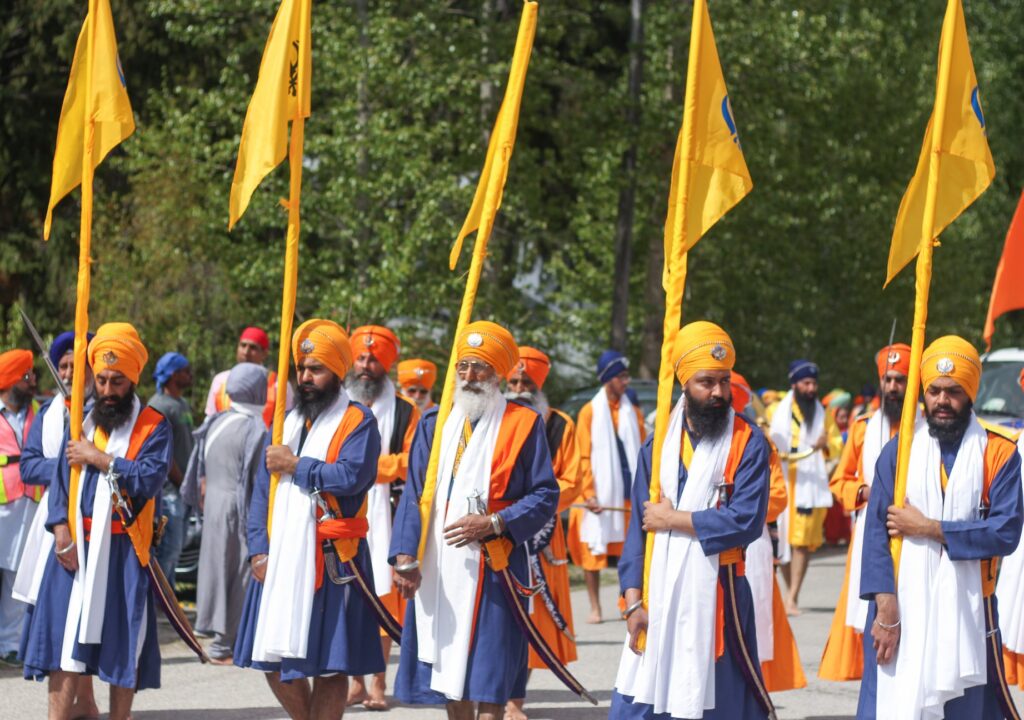
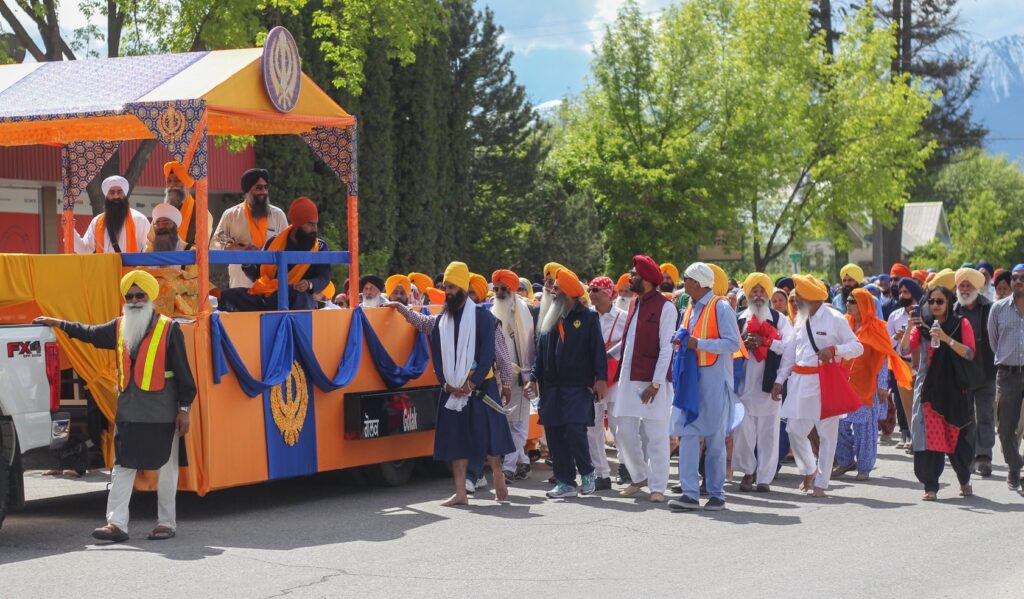

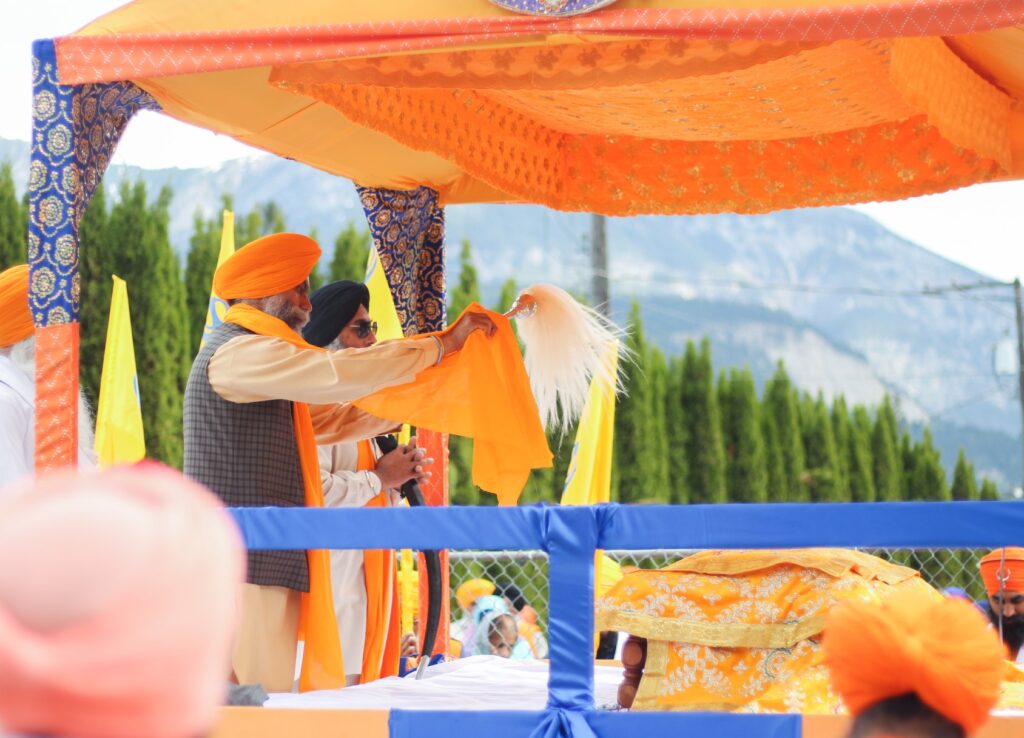
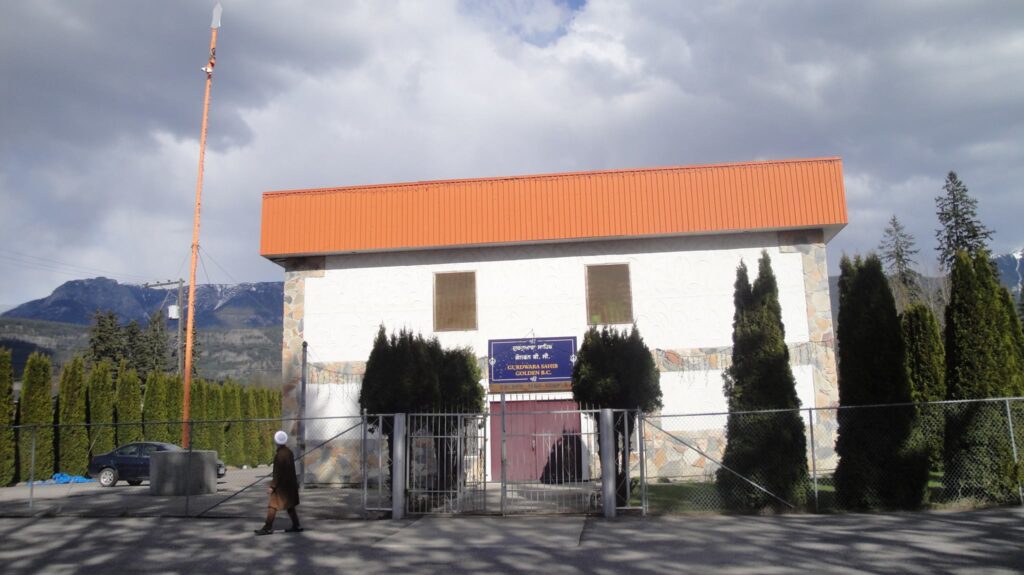
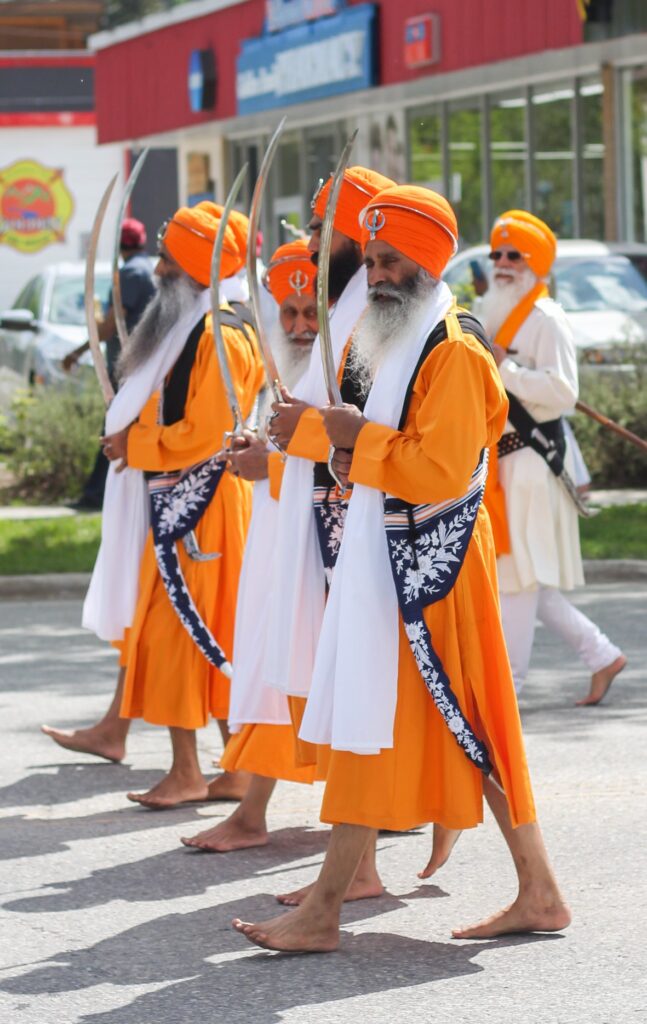
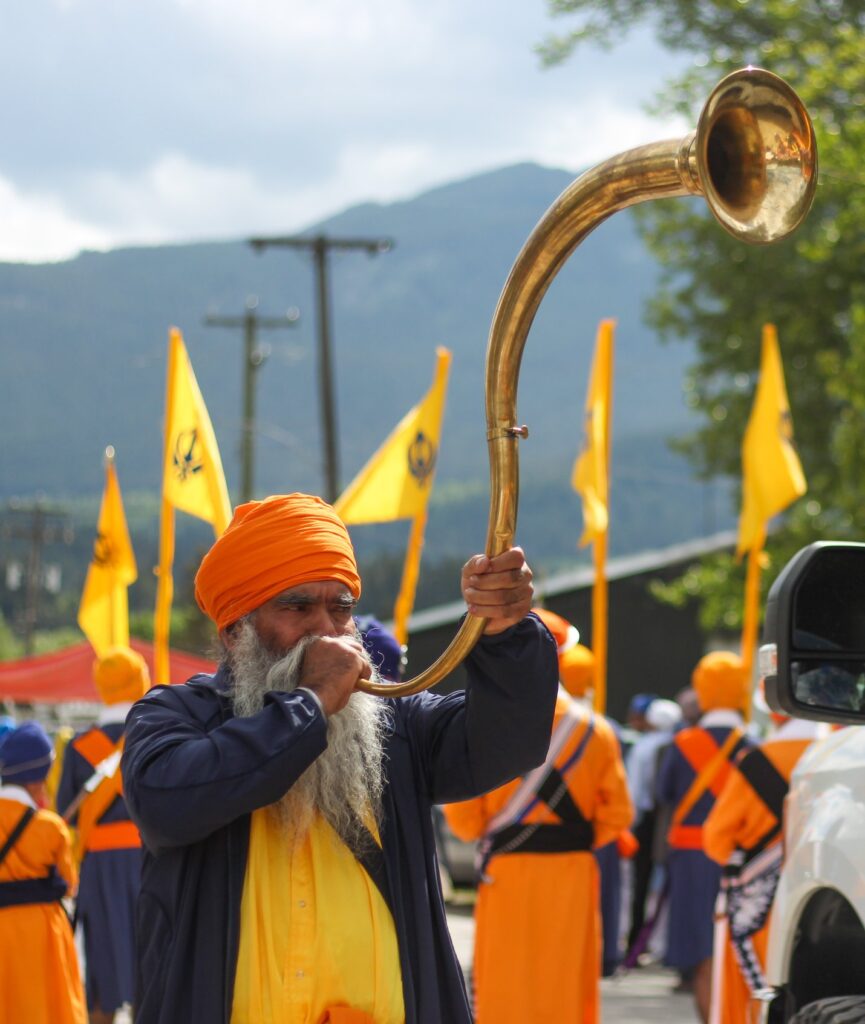

In November of 2019, the Sikh community came together to celebrate the achievements of one of their own. Jora Dhami, played hockey from a very early age and went on to join the local Junior “B” team called the Golden Rockets. In his first season with the team Jora was the teams leading scorer and has gone on from there to have a very successful career. To learn about the event that was held in his honor click Jora Dhami which will take you to the Golden Star article written about it. Watch the video about his retirement in English here Jora Dhami or in Punjabi here Jora Dhami.
A small but tight knit group of South Asian people continue to live in the community today adding to the unique mountain culture that Golden is known for. For more information on the Golden Sikh Heritage Society click Golden Sikh Heritage Society.
For more information on the Sikh Heritage in British Columbia check out this link to South Asian Canadian Heritage.
If you happen to be in the Golden, BC area drop by the Golden Museum at 1302 11th Ave South, Golden, B.C.
Our thanks to the following:
